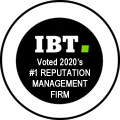3 Common Misconceptions About Digital Marketing
Steve Short, April 20, 2016
I have been a Business Development Manager at WebiMax for the past year and a half, and in that time I have had the opportunity to speak with many company leaders spanning across different industries from all over the world. What I have learned in these conversations is that there are many common misconceptions about how to leverage digital marketing to grow a business. Most often, these misconceptions are actually just challenges that can be overcome with a creative strategy.
With the right strategy, there is always an opportunity to achieve an effective digital presence. If you are on the fence about whether or not digital marketing can help you or your business, keep these common misconceptions in mind:
- Digital Marketing is so vast that it is impossible to know where to start.
Whether you are just beginning to learn about digital marketing or a seasoned professional, it can seem a daunting task just to start your plan. Common challenges in getting started include making a decision on how to allocate your budget across different channels, limited budget, limited internal resources and staying on top of the latest trends. From small business owners to decision makers at resource rich enterprise level companies, everyone is under pressure to achieve the highest ROI for every dollar spent.
Here a few pointers to help you get started:
- Social media is a great starting point for most companies looking to increase brand awareness and enhance their brand’s reputation.
- A/B test different advertising concepts with a conservative advertising amount. By doing this, you can test different messaging and ad designs on a small sample of your audience.
- Facebook, Instagram and Twitter continue to be the most effective channels to run ads and engage with audiences. The geographic and demographic targeting capabilities of these platforms are robust, e.g., you can reach people by their interests, job titles, zip code and more.
- My competition has a lot of resources; it is not worth competing with them online.
This is an understandable misconception. It might not seem that a boutique shoe store would fare well competing against heavy hitters like Nike or Adidas. However, the goal should not always be to compete, but rather to capture a piece of the market share – even if it is a fragment, and there are plenty of creative ways to do just that.
Digital marketing tactics like guest blogging and local Search Engine Optimization (SEO) can go a long way to making you more visible to potential customers, if they are done correctly and consistently.
- Engage in personalized relationship outreach with media outlets that the people searching for products in your industry read. Build content marketing partnerships with these outlets and try to submit articles on a regular basis.
- Keep up with the latest trends in your industry, differentiate yourself from the competition and establish yourself as a thought leader.
- Blog, engage, post, and share your unique content with your target market over social media, even if you are only doing so on a local scale. Repeat these steps, and you are sure to build an audience and see a return on your invested time and effort.
- I am not generating a large amount of website traffic; my campaign is a bust.
This is not necessarily true. There are a lot of important factors beyond general website traffic. For instance, the relevancy of site traffic is much more important than mere volume. Analytics are an important key in determining the success of a campaign. Gauging effectiveness requires more information than a simple count of website visits.
Tools like Adobe Analytics and Google Analytics provide visibility into many important metrics, e.g., a visitor’s average visit duration and bounce rate. These analytics programs can even give you an in depth look at the most common paths to a purchase, or a contact form submission via parameters such as heat mapping and conversion funnel analysis.
These types of measurements provide insight into what marketing channels are producing the best ROI and quality site traffic. If a marketing campaign generates 1,000 visitors and 98% of the traffic bounces, i.e., stays on the site less than 10 seconds, that typically indicates an inadequacy somewhere between the ad and the page. On the flip side, if a campaign only generates 20 visitors, but results in 10 conversions, that indicates a successful campaign.
I hope you found this post worthwhile and informative. Please feel free to contact me with any questions or comments!
Steven Short
Business Development Manager
Direct: 856-840-8311
Email: sshort@webimax.com
LinkedIn: www.linkedin.com/in/stevenjshort





